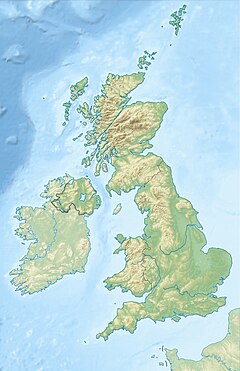Royal Observatory Greenwich

Royal Observatory, Greenwich. A time ball sits atop the Octagon Room.
|
|
| Alternative names | Royal Greenwich Observatory |
|---|---|
| Observatory code | 000 |
| Location |
Greenwich, Royal Borough of Greenwich, United Kingdom |
| Coordinates | 51°28′40″N 0°00′05″W / 51.4778°N 0.0014°WCoordinates: 51°28′40″N 0°00′05″W / 51.4778°N 0.0014°W |
| Website | www |
|
[]
|
|
The Royal Observatory, Greenwich (ROG; known as the Old Royal Observatory from 1957 to 1998, when the working Royal Greenwich Observatory, RGO, moved from Greenwich to Herstmonceux) is an observatory situated on a hill in Greenwich Park, overlooking the River Thames. It played a major role in the history of astronomy and navigation, and is best known as the location of the prime meridian, which gave its name to Greenwich Mean Time. The ROG has the IAU observatory code of 000, the first in the list. ROG, the National Maritime Museum, the Queen's House and Cutty Sark are collectively designated Royal Museums Greenwich.
The observatory was commissioned in 1675 by King Charles II, with the foundation stone being laid on 10 August. The site was chosen by Sir Christopher Wren. At that time the king also created the position of Astronomer Royal, to serve as the director of the observatory and to "apply himself with the most exact care and diligence to the rectifying of the tables of the motions of the heavens, and the places of the fixed stars, so as to find out the so much desired longitude of places for the perfecting of the art of navigation." He appointed John Flamsteed as the first Astronomer Royal. The building was completed in the summer of 1676. The building was often called "Flamsteed House", in reference to its first occupant.
The scientific work of the observatory was relocated elsewhere in stages in the first half of the 20th century, and the Greenwich site is now maintained as a museum.
There had been significant buildings on this land since the reign of William I.Greenwich Palace, near the site of the present-day Maritime Museum, was the birthplace of Henry VIII; the Tudors used Greenwich Castle, which stood on the land that the Observatory presently occupies. Greenwich Castle was reportedly a favourite place for Henry VIII to house his mistresses, so that he could easily travel from the Palace to see them.
...
Wikipedia

